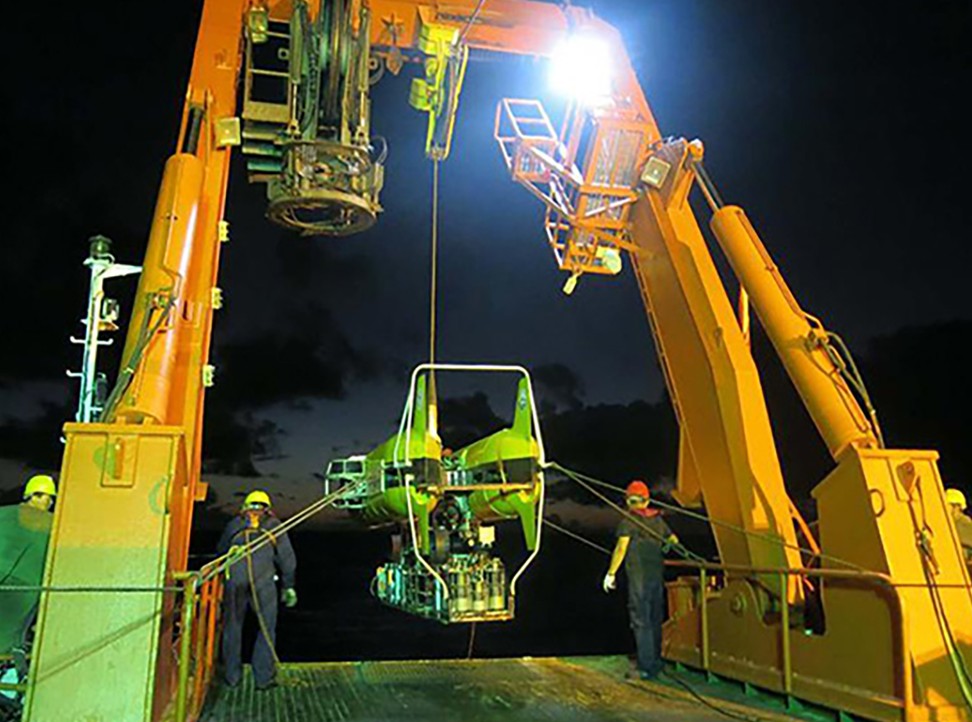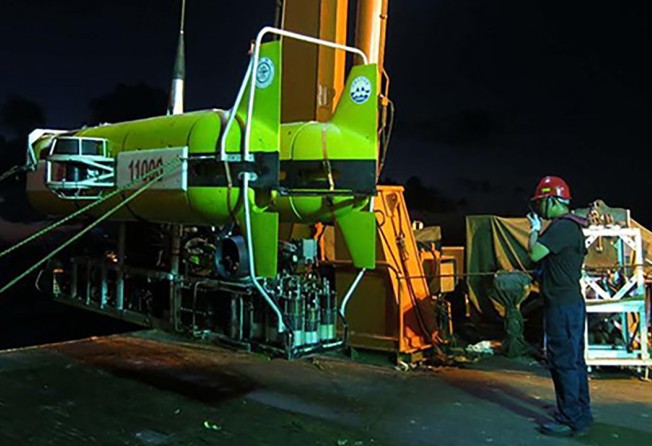
China science breakthrough: ‘Sea Dragon’ underwater robot reaches record depth of nearly 6km
Remotely operated vehicle dived to 5,630 metres near undersea mountains in the northwest Pacific during scientific expedition in the area

China’s newest unmanned underwater robot has reached a depth of 5,630 metres in its latest test dive – going deeper below the ocean surface than any Chinese vehicle of its type has gone before.
About the size of a car, the Hailong 11000, or Sea Dragon, was put to the test near undersea mountains in the northwest Pacific Ocean, the Ministry of Natural Resources said on Monday.
The deepest a Chinese remotely operated vehicle, or ROV, had gone before was 5,611 metres – a record set by the Haixing 6000 last year.
The test dive lasted for about 13 hours and involved tasks such as high-definition photography and observation. It was carried out as part of a broader scientific expedition in the area that began last month and runs until November.
The Hailong 11000 is the first ultra-deep sea ROV to be designed and manufactured in China, according to Ge Tong, a naval engineering professor at Shanghai Jiao Tong University.
Ge’s team led the engineering work on the underwater robot, which he said was designed to reach a maximum depth of 11,000 metres – about that of the deepest part of the ocean at Mariana Trench.
Being able to reach 6,000 metres below the surface would allow explorers and scientists to access most of the ocean floor, and some of its deepest trenches.

“The Hailong series of ROVs [remotely operated vehicles] can adapt to a complex deep-sea environment, as proved by earlier tests this year,” said Li Huaiming, chief scientist on the expedition. “They will be used to help scientists carry out research.”
Beijing has listed deep-sea scientific exploration as one of the key projects in its five-year plan to 2020. It is also in line with the “Made in China 2025” strategy that aims to lift the country’s industries up the value chain. The Hailong series of underwater robots is part of the push, along with the Qianlong unmanned submersibles and the Jiaolong manned deep-sea submersibles.
During the test dive, the Hailong 11000 was connected by cables to research ship the Dayang Yihao, or Ocean No 1. Like other ROVs, it can be remotely controlled by crew members on a ship or from land, while its relatively small size and the fact it is unmanned means it does not use much power and can spend long hours deep below the ocean surface. They can include equipment such as video cameras, lights, sonar systems and articulating arms to carry out tasks such as picking up objects.
Only a few ROVs have been developed worldwide to dive to a depth of 6,000 metres or more, including the Deep Discoverer, or D2, which was launched by the US National Oceanic and Atmospheric Administration in 2013.
The Dayang Yihao’s 100-day expedition in the northwest Pacific involves 87 scientists and technicians from Chinese universities and research institutes and 30 crew members. The research vessel will return to its home port of Qingdao in November.
“The area is full of mineral resources, such as cobalt-rich crusts,” said Li Bo, an official with the natural resources ministry. “It’s a hotspot for international seabed expeditions.”
Cobalt, a hard, lustrous silver-grey metal, is an important element in the lithium-ion batteries used in electronics and electric cars.